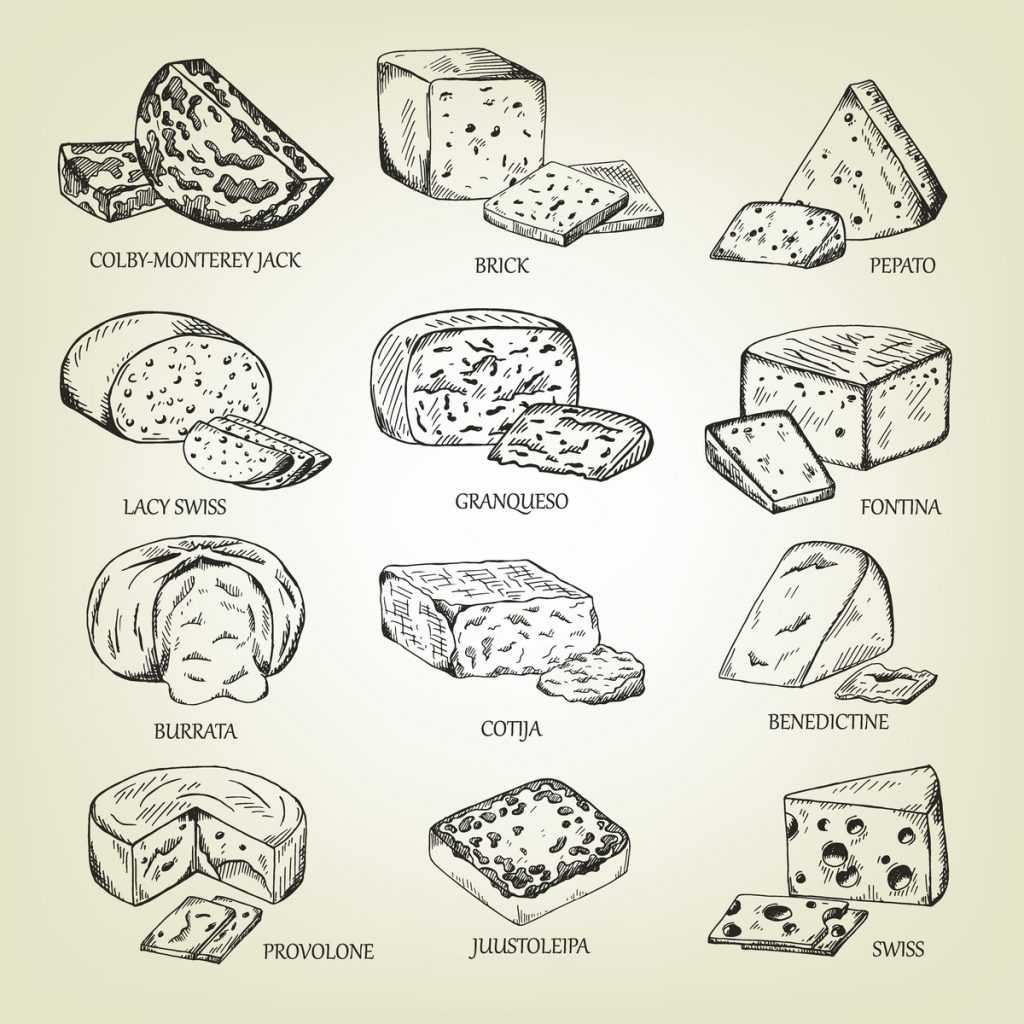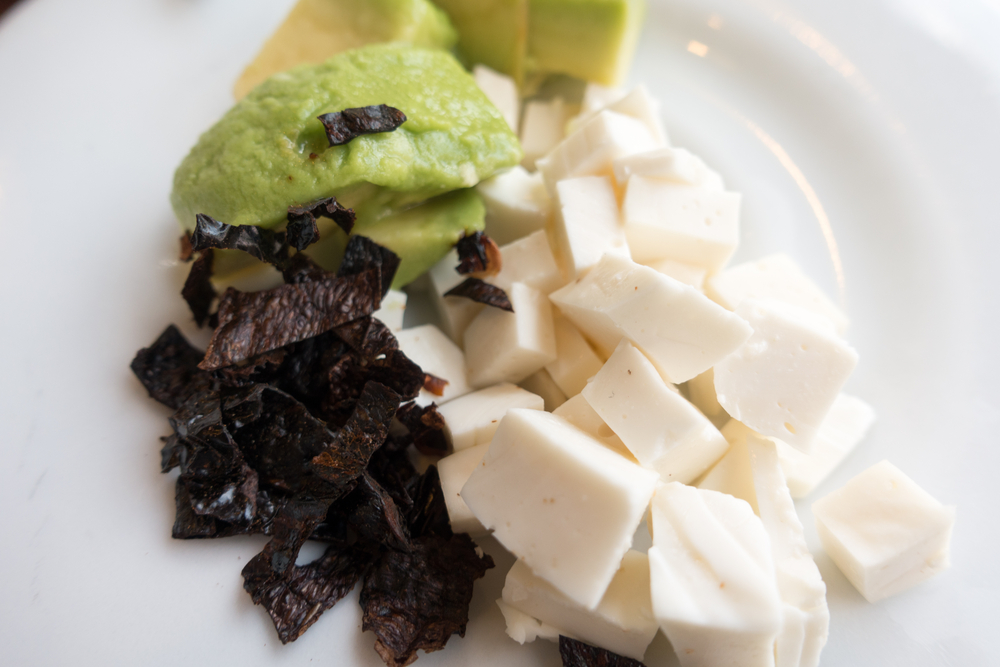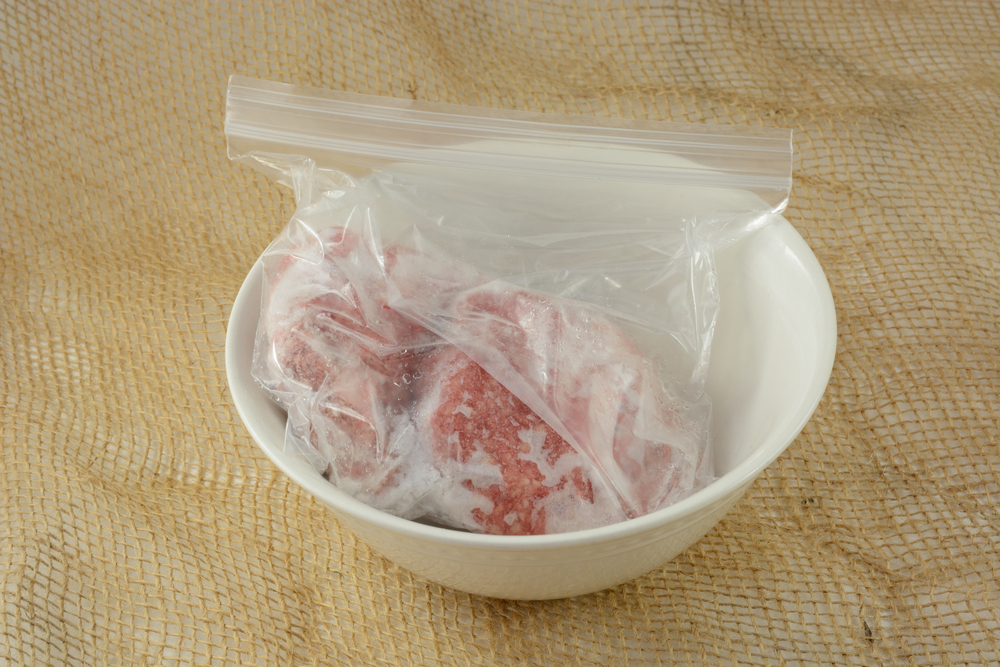Cotija cheese is a hard, crumbly cheese that originates from Mexico. It is commonly used as a topping for tacos, salads, and other dishes. But what happens when you have leftover cotija cheese? Can you freeze it for later use?
The answer is yes, you can freeze cotija cheese. However, it is important to understand how to properly store and thaw the cheese to ensure that it retains its flavor and texture.
When freezing cotija cheese, it is recommended to use a moisture-proof container and remove all air to prevent freezer burn. Additionally, it is important to avoid refreezing the cheese after it has been thawed.
Key Takeaways
- Cotija cheese can be frozen for later use.
- Proper storage is important to maintain the quality of frozen cotija cheese.
- Refreezing thawed cotija cheese should be avoided.
Understanding Cotija Cheese

Cotija cheese is a type of Mexican cheese that is popular for its salty flavor. It is a semi-hard cheese that is made from cow’s milk and originated from the town of Cotija in the state of Michoacan, Mexico.
Block of cotija cheese is typically sold in blocks or grated, and it is often used as a topping for various dishes such as tacos, salads, and soups. Cotija cheese is often compared to Parmesan cheese due to its salty and crumbly texture.
Cotija cheese is similar to queso fresco, another type of Mexican cheese, but it has a saltier flavor and a firmer texture. It is important to note that cotija cheese is not a melting cheese and is best used as a topping.
When it comes to freezing cotija cheese, it is important to note that it can be frozen for 3-6 months. However, freezing may slightly alter its texture, making it more crumbly. It is recommended to wrap the cheese tightly in plastic wrap or foil and place it in a freezer bag to prevent exposure to air and moisture.
In summary, Cotija cheese is a popular Mexican cheese with a salty flavor and a firm texture. It is often used as a topping for various dishes and can be frozen for up to 6 months.
Storing Cotija Cheese

Cotija cheese is a popular type of cheese that adds a unique flavor to dishes. It is important to store it properly to ensure its freshness and flavor. Here are the recommended methods for storing Cotija cheese.
Refrigeration Method
Cotija cheese can be stored in the refrigerator for up to one year if it is properly wrapped and stored. The cheese should be kept in a sealed container or wrapped tightly in plastic wrap to prevent it from drying out or absorbing any odors from other foods in the refrigerator.
It is also important to label the container with the date it was opened to ensure that it is used within a reasonable time frame.
Freezing Method
Cotija cheese can be frozen for up to six months. Before freezing, make sure that the cheese is not spoiled. The cheese should be wrapped tightly in plastic wrap or aluminum foil to prevent freezer burn. It is important to remove as much air as possible from the packaging to prevent the cheese from drying out.
It is recommended to freeze Cotija cheese in small portions to make it easier to use. When it is time to use the cheese, it can be thawed in the refrigerator overnight. Once thawed, Cotija cheese should be used within a few days and should not be refrozen.
Here are some tips for storing Cotija cheese:
- Store Cotija cheese in a sealed container or wrapped tightly in plastic wrap in the refrigerator.
- Label the container with the date it was opened to ensure that it is used within a reasonable time frame.
- Freeze Cotija cheese in small portions to make it easier to use.
- Wrap Cotija cheese tightly in plastic wrap or aluminum foil before freezing to prevent freezer burn.
- Thaw Cotija cheese in the refrigerator overnight before using it.
- Once thawed, Cotija cheese should be used within a few days and should not be refrozen.
By following these tips, Cotija cheese can be stored properly and enjoyed for a longer period of time.
Freezing Cotija Cheese

Cotija cheese is a popular Mexican cheese that is used in many dishes. If you have a surplus of cotija cheese, you may be wondering if you can freeze it. The good news is that you can freeze cotija cheese, but there are some things you need to keep in mind.
How to Freeze Cotija Cheese
Before freezing cotija cheese, it is important to slice or grate it into smaller portions. This will make it easier to thaw and use later on. Once you have sliced or grated the cheese, you can wrap it tightly in plastic wrap, wax paper, or parchment paper. You can also use an airtight container or a freezer bag.
If you are using a freezer bag, make sure to remove as much air as possible before sealing it. This will help prevent freezer burn and keep the cheese fresh for longer. If you have a vacuum sealer, this is an even better option for freezing cotija cheese.
Freezing Time
The freezing time for cotija cheese will depend on how you have stored it. If you have wrapped the cheese in plastic wrap or parchment paper, it should be good for up to 2 months in the freezer. If you have used an airtight container or freezer bag, the cheese can last up to 6 months in the freezer.
Thawing Cotija Cheese
When it comes time to use the cotija cheese, you will need to thaw it first. The best way to thaw cotija cheese is to place it in the refrigerator overnight. If you are in a hurry, you can also thaw it in the microwave on a low setting.
Labeling
It is important to label your cotija cheese before freezing it. This will help you keep track of how long it has been in the freezer and when it needs to be used by. You can use a marker or a label maker to label the cheese.
Conclusion
Freezing cotija cheese is a great way to extend its shelf life and prevent waste. By following the tips above, you can freeze cotija cheese without sacrificing its flavor or texture.
Remember to slice or grate the cheese before freezing it, use an airtight container or freezer bag, and label the cheese before putting it in the freezer.
Thawing Cotija Cheese

When it comes to thawing Cotija cheese, it is important to do it properly to avoid any unwanted changes in texture or flavor.
Here are some tips to ensure that the Cotija cheese is thawed correctly:
- Thaw the cheese in the refrigerator for several hours or overnight. This is the best method for thawing Cotija cheese as it allows it to slowly come to room temperature and retain its texture and flavor.
- Avoid thawing the cheese at room temperature or in the microwave as this can cause it to become mushy or rubbery.
- Once the cheese is thawed, use it immediately. Do not refreeze Cotija cheese after it has been thawed as this can lead to a loss of quality and flavor.
It is also important to note that frozen Cotija cheese may have a slightly altered texture compared to fresh cheese. It may become more crumbly or dry, but this should not significantly affect its flavor.
If you need to thaw frozen Cotija cheese quickly, you can place it in a sealed plastic bag and submerge it in cold water for a few hours. However, this method should only be used in emergencies as it can affect the texture and flavor of the cheese.
Overall, it is best to plan ahead and thaw Cotija cheese in the refrigerator to ensure that it retains its quality and flavor.
Quality and Shelf Life of Frozen Cotija Cheese
Cotija cheese is a popular Mexican cheese that is used in many dishes. It has a crumbly texture and a salty flavor that makes it a favorite among many people. However, Cotija cheese generally doesn’t have a long shelf life and should be used within about two weeks of purchase.
Freezing Cotija cheese can extend its shelf life up to 6 months, which makes it easy to stock up on in bulk or buy in larger quantities if you know you’ll use it sooner rather than later.
When freezing Cotija cheese, it is important to ensure that the cheese is not spoiled before freezing. Freezing does affect the texture of Cotija cheese, making it more crumbly, but it shouldn’t significantly affect its flavor.
To freeze Cotija cheese, wrap the cheese tightly in plastic wrap or foil and place it in a freezer bag. Thaw the cheese in the refrigerator before use.
While freezing Cotija cheese can extend its shelf life, it is important to note that the quality of the cheese may be affected. Freezing can cause the cheese to become dry and crumbly, and it may also develop freezer burn.
Freezer burn occurs when the cheese is exposed to air and moisture, causing it to dry out and develop a white, powdery coating.
To minimize the risk of freezer burn, it is important to store the cheese properly. Wrap the cheese tightly in plastic wrap or foil, and then place it in a freezer bag. Squeeze out as much air as possible before sealing the bag.
It is also important to note that frozen Cotija cheese may develop mold over time. While frozen cheese can last up to 6 months, it is recommended to use it within 3-4 months to ensure the best quality.
In summary, freezing Cotija cheese can extend its shelf life up to 6 months, but it may affect the quality of the cheese. Proper storage and thawing techniques can help minimize the risk of freezer burn and mold.
Using Frozen Cotija Cheese

Frozen cotija cheese can be used in various dishes, including salads, soups, tacos, and other Mexican dishes. However, it is essential to note that the texture of the cheese may change after freezing. It may become more crumbly, but it should not significantly affect its flavor.
When using frozen cotija cheese, it is important to thaw it properly before use. Thawing the cheese in the refrigerator is the best method to prevent any spoilage. Once thawed, the cheese can be used as a topping or added to dishes as required.
For dishes that require grated cotija cheese, it is possible to freeze grated cheese. Simply crumble the cheese and place it in a freezer-safe container or bag. It is recommended to use the cheese within three to six months of freezing for best results.
When using frozen grated cotija cheese, it is important to thaw only the amount needed for the dish. Thawing and refreezing the cheese can affect its texture and flavor.
Overall, freezing cotija cheese is a great way to extend its shelf life and reduce waste. With proper storage and thawing techniques, frozen cotija cheese can be used in various dishes as a tasty addition.
Common Mistakes to Avoid When Freezing Cotija Cheese
Freezing cotija cheese can be a great way to extend its shelf life and prevent it from going bad. However, there are some common mistakes that people make when freezing cotija cheese that can affect its quality and taste.
Here are some mistakes to avoid when freezing cotija cheese:
1. Not Removing Moisture
Cotija cheese is a soft cheese that contains a lot of moisture. If you don’t remove the moisture before freezing, it can cause the cheese to become soggy and lose its flavor. To remove the moisture, wrap the cheese in a paper towel or cheesecloth and place it in the refrigerator for a few hours before freezing.
2. Using Greaseproof Paper
Greaseproof paper is not recommended for freezing cotija cheese as it can cause the cheese to stick to the paper and become difficult to remove. Instead, use plastic wrap or aluminum foil to wrap the cheese before freezing.
3. Not Packaging Properly
Proper packaging is essential when freezing cotija cheese. If you don’t package it properly, it can become freezer-burned and lose its flavor. Use airtight containers or freezer bags to store the cheese. Be sure to label the containers with the date of freezing.
4. Mixing Pungent Foods
Cotija cheese has a unique flavor that can be affected by other pungent foods in the freezer. Avoid storing cotija cheese with other strong-smelling foods such as onions or garlic.
5. Adding Sour Cream
Sour cream should not be added to cotija cheese before freezing as it can cause the cheese to become drier and crumblier. Instead, add sour cream after thawing the cheese.
6. Not Using Microwave
Microwaving frozen cotija cheese can cause it to become rubbery and lose its flavor. Instead, thaw the cheese in the refrigerator overnight before using it.
By avoiding these common mistakes, you can ensure that your cotija cheese stays fresh and flavorful even after freezing.
Related posts:
Frequently Asked Questions
Can Cotija cheese be frozen?
Yes, Cotija cheese can be frozen. However, it is important to note that not all types of cheese freeze well. Cotija cheese is a crumbly and unripened Mexican cow’s milk cheese that can be frozen without losing its texture and flavor.
How do you freeze Cotija cheese?
To freeze Cotija cheese, it is recommended to use a moisture-proof container and remove all the air before freezing. This will ensure that the cheese stays fresh and does not get freezer burn. Additionally, it is important to not refreeze Cotija cheese after it has been thawed.
What is the best way to store Cotija cheese?
The best way to store Cotija cheese is in an airtight container in the refrigerator. This will help to prevent the cheese from drying out and losing its flavor. It is important to keep the cheese away from any moisture or strong-smelling foods to avoid any contamination.
How long can Cotija cheese last in the freezer?
Cotija cheese can last up to 6 months in the freezer if stored properly. It is important to note that the longer the cheese is stored in the freezer, the more likely it is to lose its texture and flavor.
What are some tips for freezing Cotija cheese?
Some tips for freezing Cotija cheese include using a moisture-proof container, removing all air before freezing, and labeling the container with the date of freezing. It is also important to not refreeze Cotija cheese after it has been thawed.
Can you use frozen Cotija cheese in recipes?
Yes, frozen Cotija cheese can be used in recipes. However, it is important to note that the texture and flavor of the cheese may be slightly different after it has been frozen. It is recommended to use frozen Cotija cheese in cooked dishes rather than as a topping or garnish.







